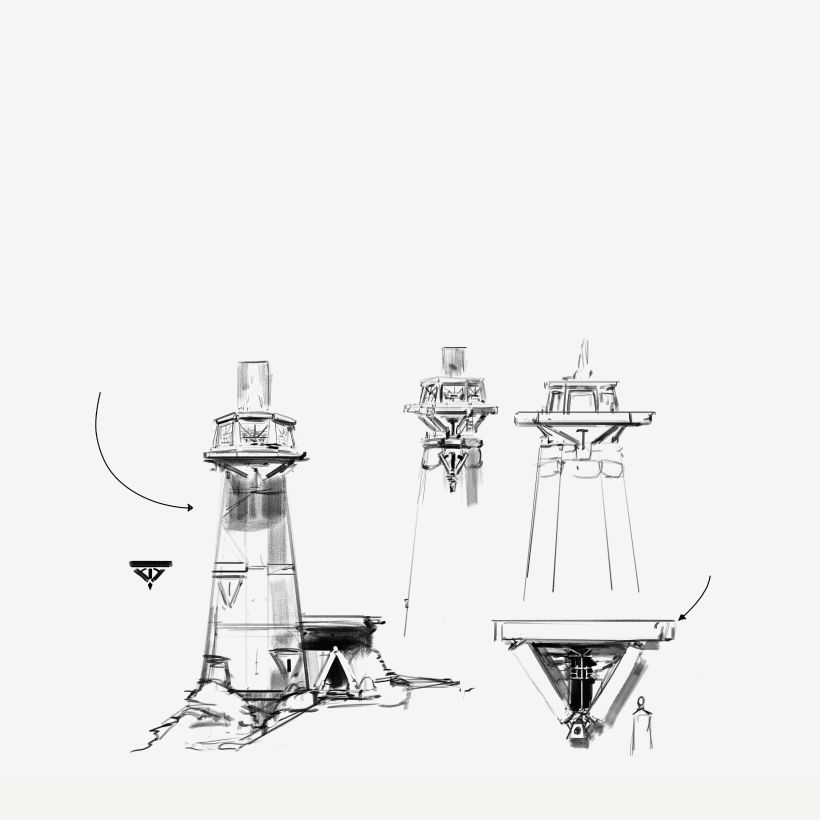Sparking Creativity: A Guide to Concept Art & Worldbuilding Inspiration
In the creative fields of concept art design and worldbuilding, finding fresh inspiration is crucial for developing immersive, engaging environments and narratives. Whether for video games, films, novels, or any other medium, the ability to conjure vivid worlds from scratch is a useful skill to have. This article explores diverse strategies to spark inspiration and fuel the creative process for concept artists and worldbuilders.

Dive into History and Mythology
The tales of the past are a wellspring of inspiration. Ancient civilizations, myths, and legends are ripe with themes, characters, and settings that can be reimagined for contemporary audiences. Studying these stories can help you understand the universal motifs that resonate across time and culture, providing a solid foundation for your own creations. Look for patterns in myths and historical events that can be twisted into new narratives or worlds. Don’t just look at how something was built, but also why, the better you understand the mindset of these ancient civilizations, the better you can shape them for your own project.
Explore Nature and Geography
The natural world is an endless source of visual and thematic inspiration. From the alien landscapes of deep-sea vents to the vast diversity of ecosystems found on land, nature offers an array of textures, colors, and forms that can spark the imagination. Geography, with its study of different environments and the interaction between landforms and civilization, can also provide ideas for creating realistic and fantastical worlds. Knowing how our real world works is the first step into creating your own rules that determine how your world functions.
Keep Abreast of Scientific and Technological Advances
Science and technology are constantly evolving, presenting new possibilities and challenges for humanity. Keeping informed about the latest discoveries and innovations can inspire concept art and worldbuilding that feels cutting-edge and plausible. Whether it's the potential of AI, advancements in space exploration, or breakthroughs in biotechnology, these developments can serve as a springboard for your creativity. If you’re interested in older technology make sure to take a good look at the materials used, how they got them and how it influenced scientists of old to come up with their fantastic inventions. The more you create a logical flow of cause and effect, the easier it will be for your audience to understand your works.
Engage with the Creative Community
Interaction with fellow artists and creators can stimulate inspiration through exchange and collaboration. Communities, whether online or in-person, provide platforms for sharing work, receiving feedback, and discussing ideas. Challenges, prompts, and competitions within these communities can also motivate you to think outside your comfort zone. You don’t have to do this alone!
Practice Mindfulness and Observation
Sometimes, inspiration lies in the mundane. Practicing mindfulness and honing your observational skills can reveal the extraordinary in the ordinary. Pay attention to the details of your daily life—the patterns of shadows on the street, the stories of the people around you, the architecture of your city. These observations can fuel your imagination and find their way into your concept art and worldbuilding. So if you can’t draw and work on your drawing and concepting skills all the time, you can still improve just by being mindful of how the world around you is put together.
For further exploration of these topics, in my Domestika course you will learn how to find inspiration for concept art design and worldbuilding, while exploring unique perspectives and ideas. The key is to remain curious, open-minded, and respectful, allowing these inspirations to inform and enrich your creative work.







0 comments